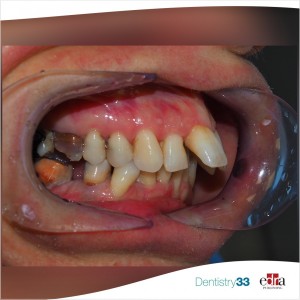
Orthodontic treatment and periodontally compromised patients: effects of the treatment
Davide Elsido
An increasing number of adult patients are now seeking orthodontic treatment due to an increased focus of society on esthetics and health consciousness. With the incidence of periodontal problems shown to increase with age, ortho-perio interactions play an important role in management of these patients. Orthodontic problems in the majority of these adult patients are a consequence of their underlying periodontal issues leading to reduced periodontal support and resulting in pathological migration, proclination of maxillary anterior teeth, interdental spacing, rotation and overeruption, resulting in compromised function and esthetics. Unfortunately there is no evidence-based solution to these problems and, with an increasing number of adults with malocclusion and compromised periodontium seeking orthodontic treatment, it is important to clarify the various issues involved in managing periodontally compromised dentitions.
As orthodontic tooth movement is basically a bone remodeling phenomenon, the effect of orthodontic treatment on osseous topography in patients whose bone levels are already compromised is crucial.
This was a prospective, randomized, controlled clinical trial. Thirty-six periodontally compromised adult patients (mean age: 29.67 ± 4.8 years) were randomly allocated to either test (perio-ortho) or control group (perio). After periodontal stabilization in both groups, orthodontic treatment was started in the test group, whereas the control group remained on periodontal maintenance only. Evaluation and comparison of clinical parameters (plaque index [PI]; gingival index [GI]; bleeding on probing [BOP]; probing depth [PD]; clinical attachment level [CAL]) of both groups was assessed at three time intervals: T0 (base line), T1 (at start of orthodontic treatment), and T2 (1 year after start of orthodontic treatment). Radiological parameters (alveolar bone levels [ABL]) were recorded using CBCT at T1 and T2.
The results of the study showed favorable results of a combined periodontic-orthodontic treatment in periodontally compromised patients. There was a statistically significant improvement in all the periodontal parameters in the control and test groups with a highly significant CAL gain of 0.74 mm (CI: 0.64-0.83) and 0.98 mm (CI: 0.94-1.01), respectively, from T0-T2. Use of CBCT enabled evaluation of ABL changes on all four surfaces of upper and lower anterior teeth and showed statistically significant improvement in ABL from T1 to T2 in both groups.
Within the limitations of the study, it can be concluded that orthodontic treatment does not have a deleterious effect on periodontal health after periodontal stabilization in periodontally compromised patients.
 Related articles
Related articles
Orthodontics 05 September 2022
Effect of orthodontic treatment on periodontal health of periodontally compromised patients
An increasing number of adult patients are now seeking orthodontic treatment due to an increased focus of society on esthetics and health consciousness. With the incidence of periodontal problems...
 Read more
Read more
Much like EMTs rushing to the scene after an accident, stem cells hurry to the site of a skull fracture to start mending the damage. A new finding has uncovered the signaling mechanism that triggers...
Products 05 November 2025
SimplyTest has launched a groundbreaking saliva-based test to detect high-risk strains of oral human papillomavirus (HPV), a major cause of oropharyngeal cancers.
News 05 November 2025
Perimetrics, Inc., a dental technology company pioneering quantitative diagnostics, announced today that the U.S. Food and Drug Administration (FDA) has granted clearance for the InnerView...
News 05 November 2025
On October 15, open enrollment for Medicare began nationwide. Hundreds of thousands of seniors in New Jersey will once again face the challenge of finding the right Medicare coverage, including the...
Digital Dentistry 04 November 2025
Digitalisation is an expanding field in dentistry and implementation of digital teaching methods in dental education is an essential part of modern education.


.jpg)








